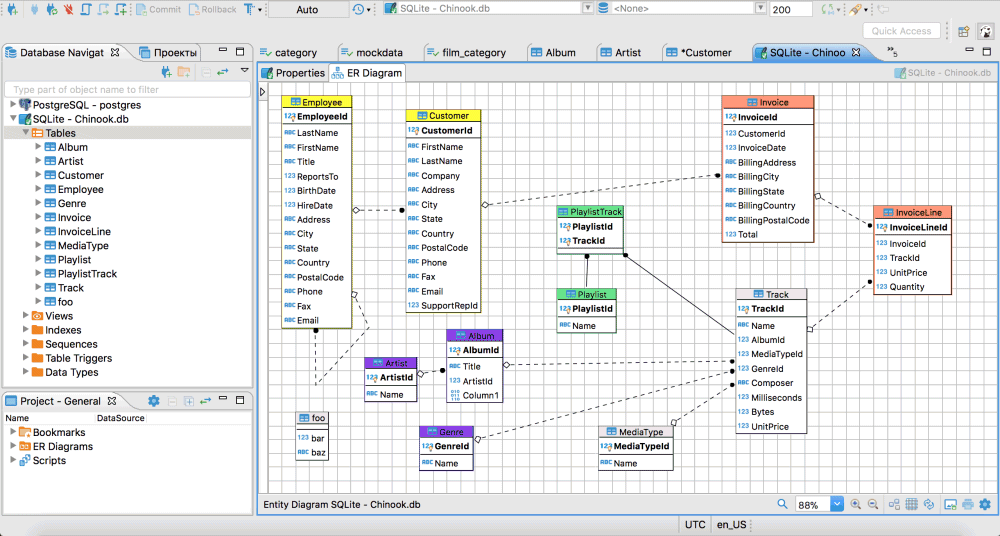A popular multiplatform software like DBeaver It has many years of continuous improvements and optimizations on its side. At the beginning of March 2024 it presents itself as further updated software, in versions for Windows, macOS and Linux (it is also available in the form of a plugin for the Eclipse IDE).
DBeaver is a client di database universal and free, designed to simplify the development, management and manipulation of databases. It can connect to a wide range of databases, including MySQL, PostgreSQL, Oracle, SQL Server, SQLite and many more, making it a versatile tool for developers and developers. database administrators.
What is DBeaver
Software like DBeaver, also available in a commercial version, but basically free and open source, wipes out the need to equip yourself with many different clients to connect and administer various types of databases.
L’interface user of DBeaver is well designed and intuitive: it is not the best in terms of aesthetics, but that, obviously, is not the main purpose of the program. There tree structure allows easy exploration of the objects contained in the database. Navigation trees show database schemas, tables, views, procedures, indexes, and other objects.
DBeaver offers a powerful editor SQL with features like syntax highlighting, autocompletion, and code formatting. Developers and data analysts can thus leverage the tool to make it easier to write and run query SQL complex.
The application offers options for data visualization highly flexible, including spreadsheet and grid views. DBeaver also simplifies user and privilege management, allowing database administrators to easily manage permissions and control access to database objects.
The program integrates dedicated tools that help explore the structure (schema) of databases, making it easier and more immediate to understand the dependencies between objects. Finally, the import and export tools simplify the movement of data between databases of different types.
Which databases does DBeaver support
A database client like DBeaver supports any database equipped with driver JDBC (Java Database Connectivity): this means that basically all databases can be managed using this application. Commercial versions of DBeaver also support non-JDBC data sources such as MongoDB, Cassandra, Couchbase, Redis, BigTable, ScyllaDB, DynamoDB and so on. The complete list of supported databases is available on this page: as you can see, the traditional ones are included relational databases (RDBMS), i database analytics, quelli document-orientedcloud databases, big data/Hadoop, simple key-value databases, database time series designed to manage data and time series, database graph which use graph models to represent and connect data, databases embedded integrated directly into applications.
How to install and use DBeaver
Per install DBeaver, we suggest referring to the download page on the official website. In the case of Windows, one is also available portable version to extract from the Zip archive. Furthermore, you can load the application either by referring to the Microsoft Store or by using the package manager per Windows Chocolatey.
In another article we saw the differences between package managers for Windows and highlighted how it was a concept born in the field GNU/Linux has now been a protagonist, for years, also on the Microsoft operating system.
After installing DBeaver, you can choose by launching the application Database, New connection to specify the type of database you want to connect to. By entering the required information, such as host address (or host name if you are on a local network), port, username, password and other database-specific details, you can then use the button Connection Test to make sure everything is working properly.
Once the connection is made, it is possible explore the database using the connection tree on the left. Just double click on the database name to view tables, views, any stored procedures and other database objects.
How to run SQL queries on database
By choosing the database or table on which run a querysimply right-click and choose SQL Editor o New SQL Editor dal menu.
L’editor SQL obviously allows you to prepare and modify SQL queries: any variations on the syntax linked to the type of database selected must be considered. After writing the query, you can run it by clicking the icon Run or by pressing the button F5. The query results are shown at the bottom of the editor.
Connection management is achieved by moving up Database in the main menu, then selecting Manage connections.
As mentioned above, DBeaver is designed to manage a wide range of databases, allowing developers to work with different database management systems using a single user interface. The features of syntax highlighting and autocomplete make it easier to read and write SQL code.
Users can run SQL queries directly from the editor, getting immediate results. Furthermore, the query history executed allows developers to easily view and repeat previously used queries. The excellent error handling allows you to identify problems relating to queries by providing useful tools to apply the appropriate corrections.
In addition to basic features, DBeaver SQL Editor also offers advanced features such asrunning SQL scriptsgenerating sample data, and managing referential integrity constraints.
I referential integrity constraints are rules or conditions defined in a relational database to ensure data consistency between two tables linked by a relationship. These constraints are designed to preserve data integrity and prevent operations that could lead to inconsistent or invalid results.
Opening image credit: iStock.com – islander11



